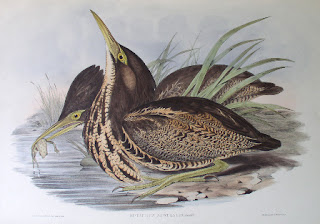With all the hullabaloo about the impact of intensive farming on waterways, the impact on birds has been overlooked.
Millions of birds have been lost from New Zealand countryside over the past thirty odd years. Most of them were introduced birds so have not been missed but surely someone should have recognised that their loss indicated something had gone very wrong with farmland ecosystems.
We have a survey on New Zealand’s backyard birds, initiated by Landcare Research, but no up to date information on the birds of the countryside.
The only comprehensive data we have is from the Ornithological Society of New Zealand’s Atlas of Bird Distribution in New Zealand 1999-2004which was published 2007. It was noted at its launch that the Waikato region had become a "bird desert" probably because of the dominance of dairy farming in the region. Birds have not, it seems, fared quite so badly on the less intensive meat and wool farms, but very little, if any, follow up research was initiated.
So all one can do at this stage is to draw upon anecdotal observations of birders.
Not all declines of birds can of course be ascribed to intensive farming. There are not as many Australasian harriers around as there used to be when there was a lot of possum road kill around. Spur-winged plover are also in decline, but they are now on the kill list even though they are classified as native. Rooks have been exterminated and for no good reason at all. The great flocks of finches have also gone. Somewhere during the 1990s the small hay bales were replaced by plastic covered ensilage which deprived the finches, mostly yellowhammers, of the seed, their winter fare.
However, it is the decline of insects which has had the greatest impact on birds. There is no monitoring of insects in New Zealand to my knowledge. However, the front car window, acting as an informal splatter test for insects, has revealed their precipitous decline, along with insect eating birds, over the last thirty years, in line with what is happening on the rest if the planet. The widespread use of pesticides is undoubtedly to blame.
The great flocks of starlings, the spectacular murmurations have gone. Farmers, until the 1990s, used to put out nesting boxes for them, because of the sterling work they did in controlling pastural insect pests such as porina and grass grub. Their relatives, that unloved bird imported from Asia, the mynah, has also declined. Remember how they used to play chicken with cars on the roads looking for insects.
Farm runoff, the excessive application of artificial nitrogen, has been deemed responsible for the decline of our waterways, and the life in and around them. During the winter and early spring, it is usual to see the pairs of paradise duck spread out through the paddocks, but even they have declined. A puzzle at first as they are grass eating ducks, until it occurs that their ducklings need aquatic insects in order to thrive. White-faced heron, kingfisher, pied stilt, fantails and bittern, birds which one would normally, or used to see, around waterways or swampy farm land, have all but disappeared. Even the pukeko’s distribution has become patchy.
But it is the story of the bittern which is particularly tragic. The green bell frog, another import, this one from Australia, virtually disappeared in 1990s. Its disappearance was blamed on farming as it could be found still in areas where farm runoff could not be implicated. The causes are still a bit of a mystery, although ivermectine pour on drenches and atrazine have been suspects. The bittern which until the 1990s was widely distributed on farm land, feeding on the frogs which proliferated in drains. They are now on the endangered list. Bird rescue reports indicate the bittern was simply being starved out of existence.
Farm drains and effluent ponds used to be a major breeding ground for mallard ducks and their hybrids. The reasons for their decline in the North Island is uncertain.
The most distressing story is about the conversion of the 150,000 hectare Kaingaroa Forest into dairy farms by Landcorp, now ironically called Pamu. These conversions touted as being environmentally friendly, saw the loss of millions of birds, including high numbers of kiwi who it was reported preferred pine forest because it harboured fewer predators. The forest boasted the highest densities of birds recorded on the New Zealand mainland, with 1203 pairs per 100 ha, 652 of which were native. Birds of the Kaingaroa Forest Driving through the area last spring I counted just 3 birds, magpies.
Did anyone report and lament the losses. Forest & Bird? Agricultural scientists? Policy makers, farm leaders and the government of the day surely knew what was happening and did nothing. The 2017 report, Saving New Zealand’s Birds, from Parliamentary Commissioner of the Environment had next to nothing to say about farm birds.

Comments